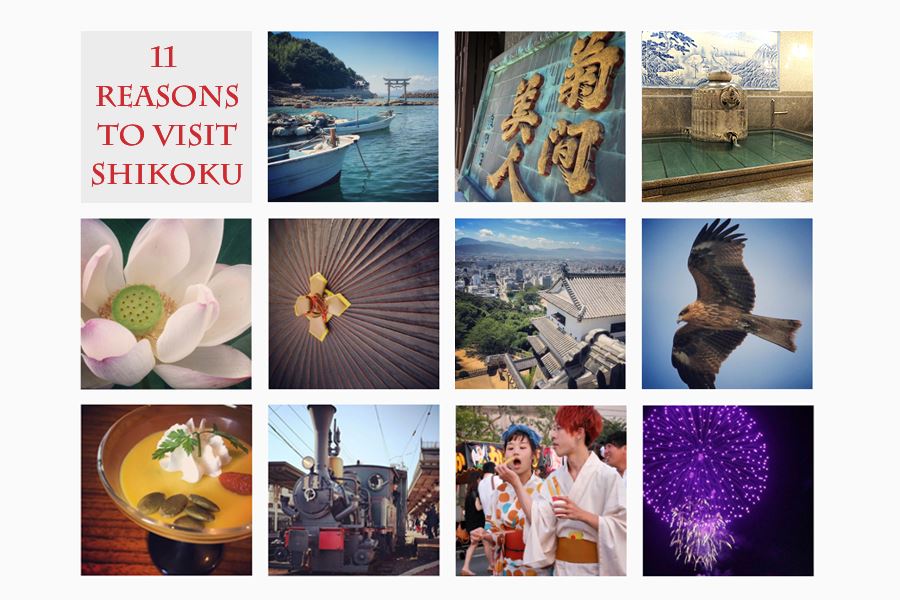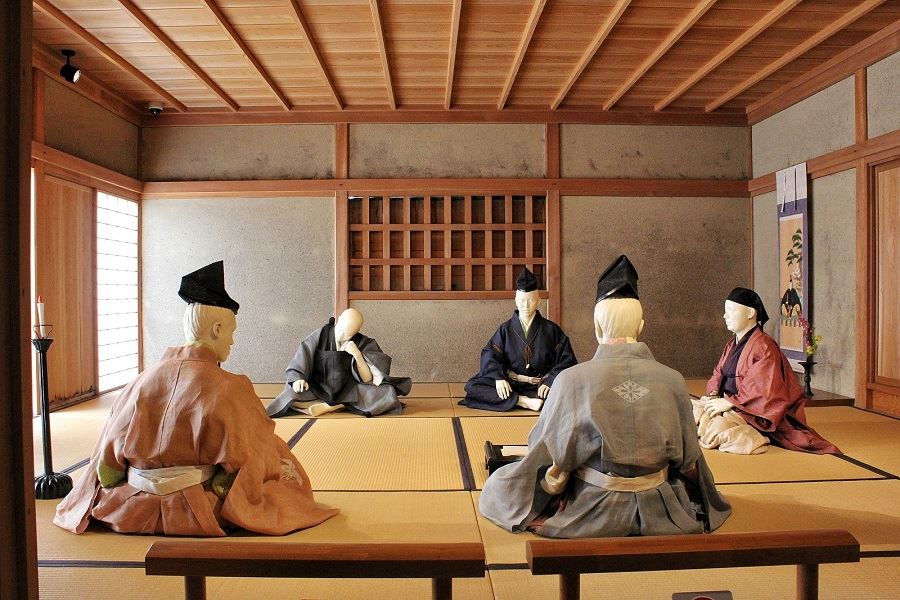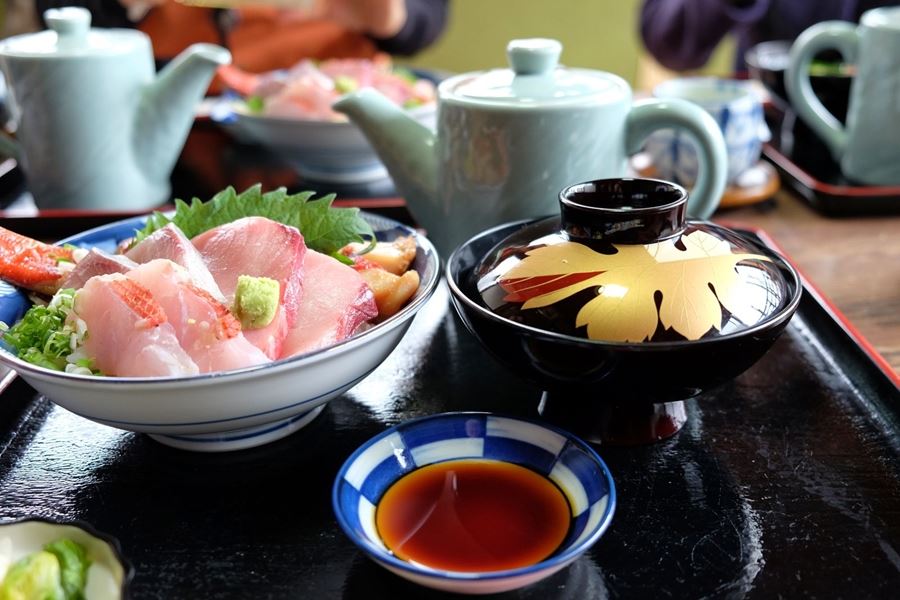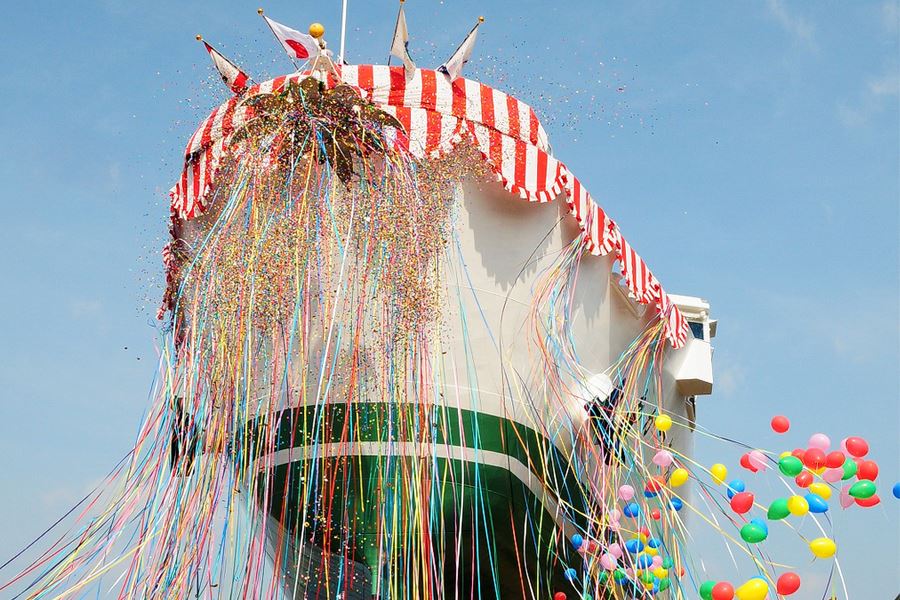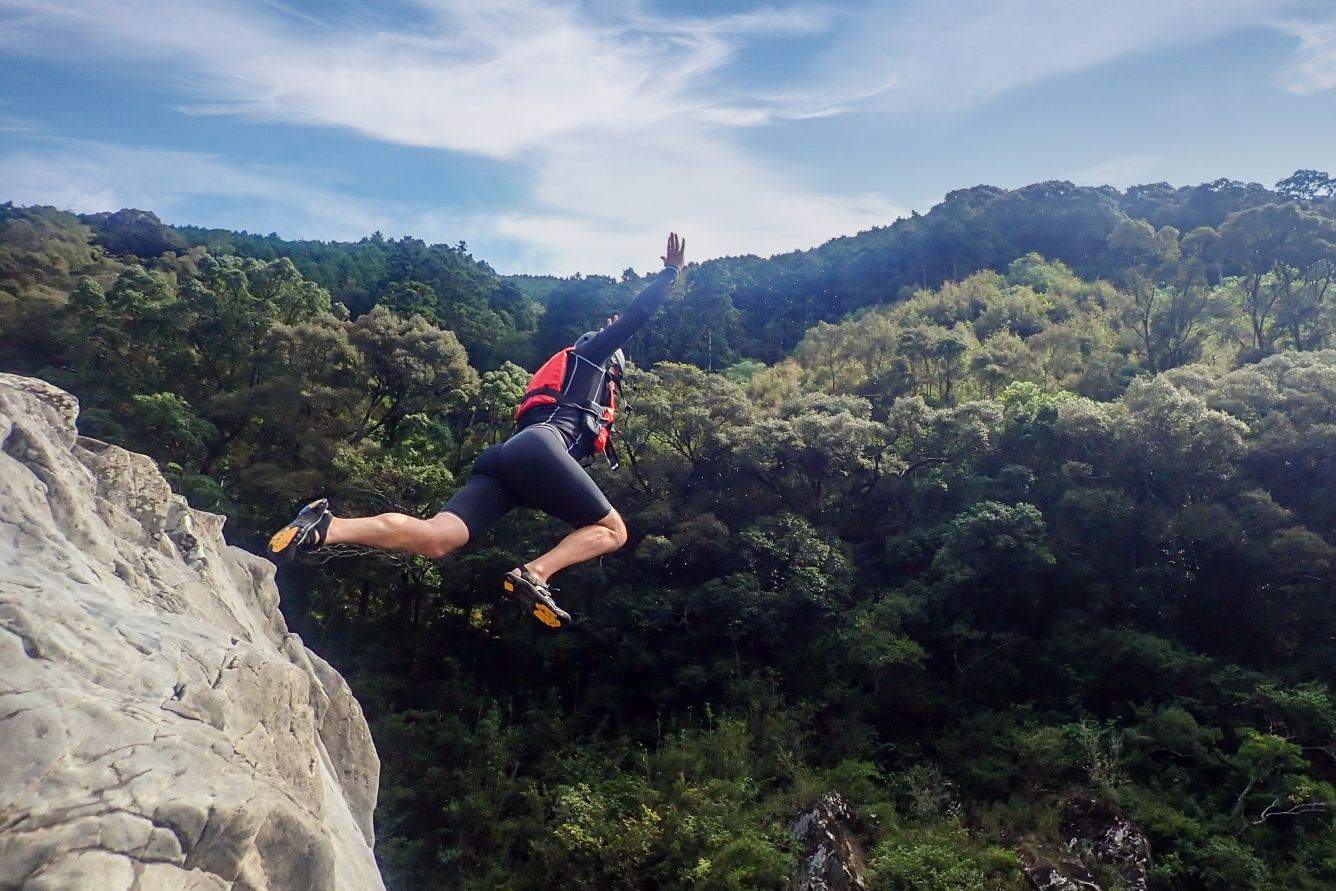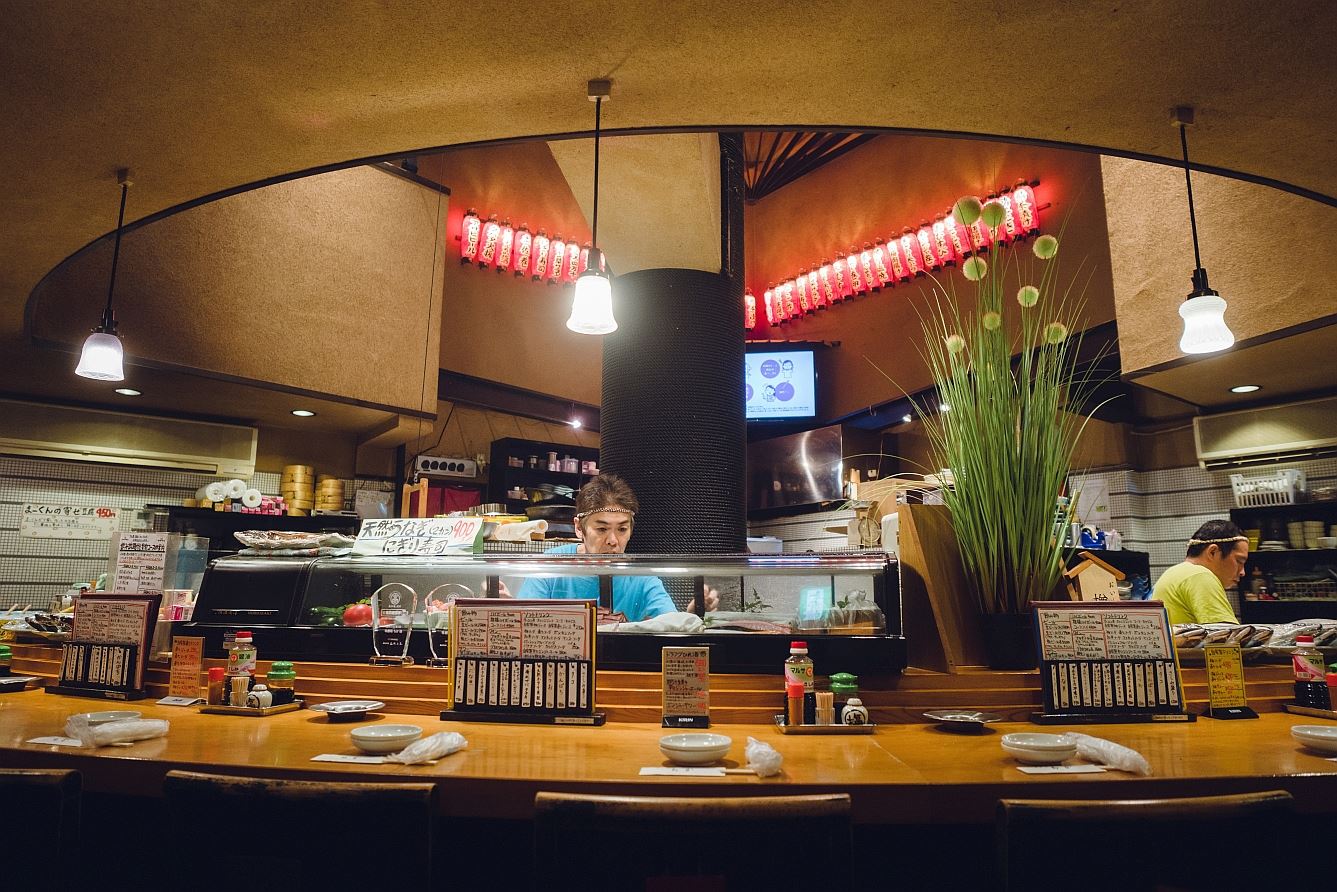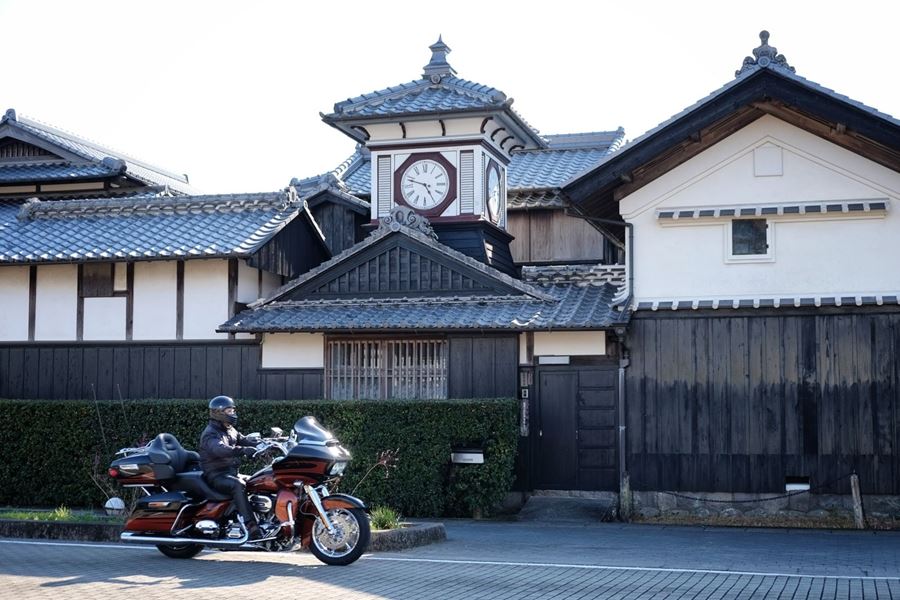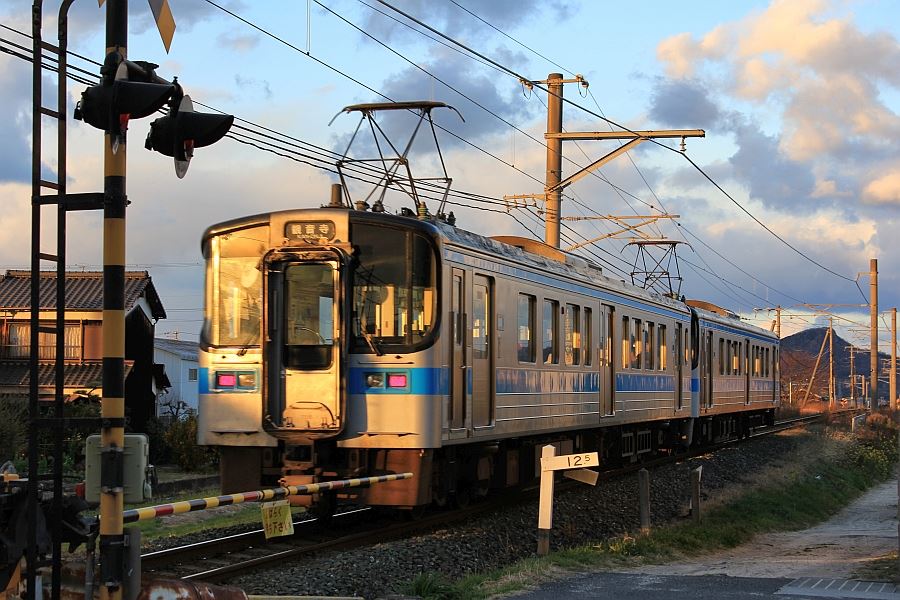A Brief History of Shikoku
Home » A Brief History of Shikoku
A Brief History of Shikoku
Prehistory
During the last ice age, the landmass that is now Shikoku island was joined to mainland Japan by a very large land bridge. A bay extended from the Pacific roughly to where the Shimanami Kaido is today. Mammoths and giant elk moved freely over this land bridge. When the ice melted, sea levels rose, and the Seto Inland Sea was formed, cutting Shikoku off from the mainland.
Late prehistory
There are remains of human habitation in Shikoku from the Jomon (14,000 – 300 BCE) and Yayoi (300 BCE – 300 AD) periods. At Mikawa in Ehime, you can see a Jomon female skeleton found in a cave, and in the Ryugado Caves in Kochi, there’s a Yayoi pot coated in stalactite. In the Kofun period from 300 to 538 AD, many of the burial mounds called kofun were built in all of the flatter areas of Shikoku, and they still dot the landscape. Toward the end of this period, Buddhism and kanji were introduced from Korea, and the imperial house was established.
Ancient times
According to the Kojiki mythology from the early 8th century, which describes the creation of Japan by the gods, Shikoku was the second island created in the Japanese archipelago, after Awaji Island. In the Kojiki and Nihon Shoki, the island is called Iyo no Shima.
The Nihon Shoki records that Emperor Yomei and his son, imperial prince Shotoku, both visited Shikoku and bathed at Dōgo Onsen, establishing the baths as the oldest in Japan’s known history. Even from ancient times, Dōgo enjoyed prosperity.
About one hundred years after the introduction of Buddhism, a mountain ascetic and shaman called En no Gyōja (634-701) laid the foundations of the Shikoku Pilgrimage by undertaking ascetic practice around the coasts and mountain peaks of the islands, and preaching enlightenment to common people. En was followed by Gyōki (668-749) who travelled around the island helping the poor. Of the 88 pilgrimage temples, Gyōki is said to have established 37. After En came Kūkai (774-835) who was born where Zentsu-ji is today. After studying in China, he returned to Japan and founded the Shingon school of Buddhism. Like his predecessors, he carried out ascetic practice in the wild places of Shikoku. He was a talented engineer and some of his irrigation works are still functioning. He’s credited with founding the pilgrimage.
The medieval period
From the early modern period, four main principalities emerged – Awa, Sanuki, Iyo, and Tosa – whereafter the island was known as Shikoku, or the four domains. These domains were ruled by local clans that developed cultures according to their geographic circumstances. For example, the Kono clan of Iyo were originally pirates, levying tolls on shipping in the Inland Sea. They then evolved into a coastguard, guiding ships. Ultimately, they formed the core of Japan’s navy. In Tosa with its poor agricultural base, the Chosakabe led warrior-farmers in a bid for better farmland at the expense of neighbouring territories.
During the Genpei War when the Taira clan were forced to leave the capital Kyoto for the provinces with the child Emperor Antoku, they made Yashima their temporary home, before the Minamoto army drove them out in 1185. During the Muromachi period, the Hosokawa clan ruled over Sanuki, Awa, and Tosa, while the Kono clan ruled over Iyo.
In the Warring States period, after a long struggle, Chosokabe Motochika unified Shikoku for a while. But soon Toyotomi Hideyoshi invaded from the mainland in 1585 and added Shikoku to the expanding nation of Japan. Chosokabe was sent back to Tosa and he became a vassal of Hideyoshi. At the Battle of Sekigahara in 1600, Chosokabe Morichika fought on the losing side and was removed from his domain, and he and his sons were beheaded.
The Edo period
With the start of the Edo period after Sekigahara, the feudal lords who had governed various parts of Shikoku for centuries were expelled and replaced by generals loyal to the Tokugawa shogunate. Sanuki went to the Ikoma clan, Awa to the Hachisuka clan, and Tosa to the Yamauchi clan. However, the Ikoma revolted, and Sanuki was divided into two administrations. Iyo was governed by several small lords and was not unified as a province. These ruling families from other parts of Japan became naturalised to Shikoku. Nevertheless, even today, while representatives of the local governments are partisans of these outside rulers, the people tend to idolise the leaders of the pre-Edo clans.
The magnificent Shikoku castles that you see today were all built by these Edo period lords. None of them saw action.
During this time, Sanuki became a major producer of wheat, and Sanuki udon became an important part of the diet. It’s still hugely popular in Kagawa today. Meanwhile in Tokushima city, built on islands in the Yoshino River delta, a new, ambulatory version of the Bon Odori dance was developing which evolved into today’s Awa Odori. The abundant forests and water resources of Shikoku formed the basis of a pulp and paper industry. Merchants made vast fortunes from indigo, tobacco, and a revolutionary smokeless candle wax.
During the period that ended the Tokugawa Shogunate and saw the restoration of imperial government, the Tosa domain was deeply involved in the political affairs of Japan. Sakamoto Ryoma and others from the Tosa clan formed a revolutionary alliance with the Satsuma and Choshu domains. In the Boshin War between the imperial and shogunal factions, the Tosa clan fought successfully on the imperial side.
The Meiji period
With the restoration of imperial rule, the old feudal domains were replaced by prefectures – Tosa became Kōchi, Awa became Tokushima, Sanuki became Kagawa, and by degrees, Iyo became Ehime.
In a bid to throw off the last shackles of feudalism, Itagaki Taisuke, a former Tosa clan samurai led the Movement for Civic Rights and Freedom. Meanwhile Masaoka Shiki, a literary man from Ehime, led the renewal of the haiku poetic form.
Shikoku was a leader in Japan’s industrial revolution. In 1889, the first electric lightbulb in Shikoku shed its light in Yawatahama, Ehime. Such was the vigour of Yawatahama’s industry that it was referred to as the “Manchester of Shikoku”. As Ehime’s leading industrial centre, the first bank in Ehime opened there in 1878. The city was also home to aircraft pioneer Chuhachi Ninomiya whose aeroplane designs were rejected by the Japanese military, thereby ceding the first flight to the Wright brothers.
In Aki, Kōchi, Iwasaki Yataro’s business activities led to the formation of a trading and tech company, Mitsubishi in 1873. The trefoil crest of the ruling Yamauchi clan was repurposed into the three lozenges of today’s Mitsubishi.
During the Russo-Japanese war, the Akiyama Brothers from Matsuyama successfully led the Japanese cavalry and navy respectively. Matsuyama housed a POW camp that won international acclaim for its enlightened treatment of prisoners.
From Showa to today
In the lead-up to WWII, Mitsukue Bay in Ehime was used to train the crews of the small submarines used in the attack on Pearl Harbour. During the war, there was a grim prisoner of war camp at Zentsuji. In the last months of WWII, Tokushima, Takamatsu, and Matsuyama were heavily bombed, destroying over 70% of their buildings.
After the war, industries that developed during earlier periods expanded, becoming the source of much pollution. Copper mining at Besshi Dozan and smelting on Naoshima were major industries, but when they declined, the facilities were repurposed for tourism.
Pioneering natural farmer Masanobu Fukuoka, author of The One-Straw Revolution, developed his methods in Ehime on his family’s farm. Shikoku became known as a producer of a bewildering array of delicious citrus fruit.
In 1985, the Great Naruto Bridge was completed, linking Shikoku to Honshu by road for the first time in history. This was followed by the Great Seto Bridge system in 1988, and the Nishiseto Expressway, otherwise known as the Shimanami Kaido in 1999.
The blue LED light was invented by Nakamura Shuji in the early 90s at a small company in Tokushima, enabling today’s low-power LED displays. Nakamura hails from Ehime.
In 2011, Shikoku Tours was established and began offering tours in the vicinity of Matsuyama. We soon began meeting the demand for tours of all four prefectures, and we believe that we were the first in history to offer a self-drive tour of the Shikoku Pilgrimage.
Related Tours

Experience the most beautiful and interesting temples of the Shikoku Pilgrimage in seven days.

A tour for families or friends, staying in the most characterful kominka and ryokan of Shikoku.

Visit the most beautiful and interesting temples of the Shikoku Pilgrimage and walk the toughest trails.

